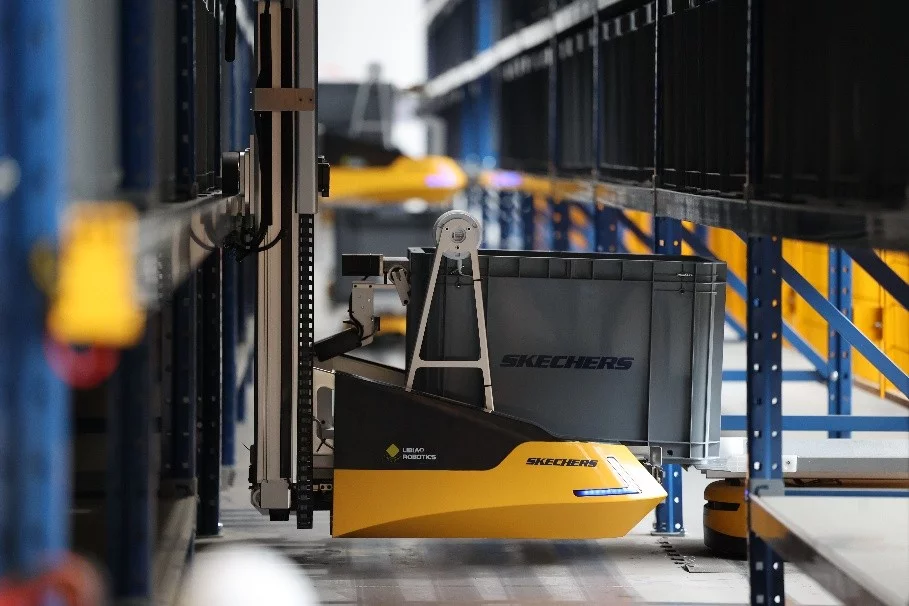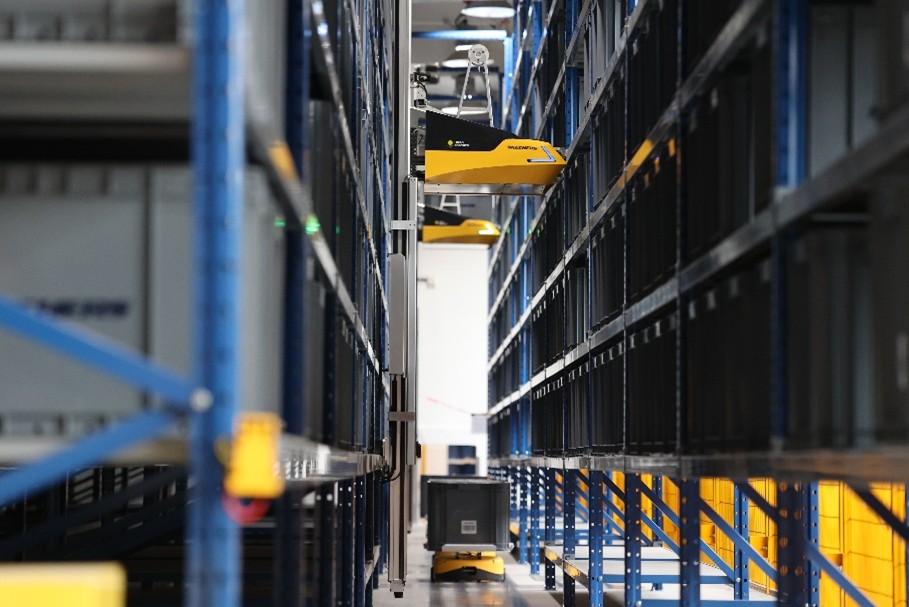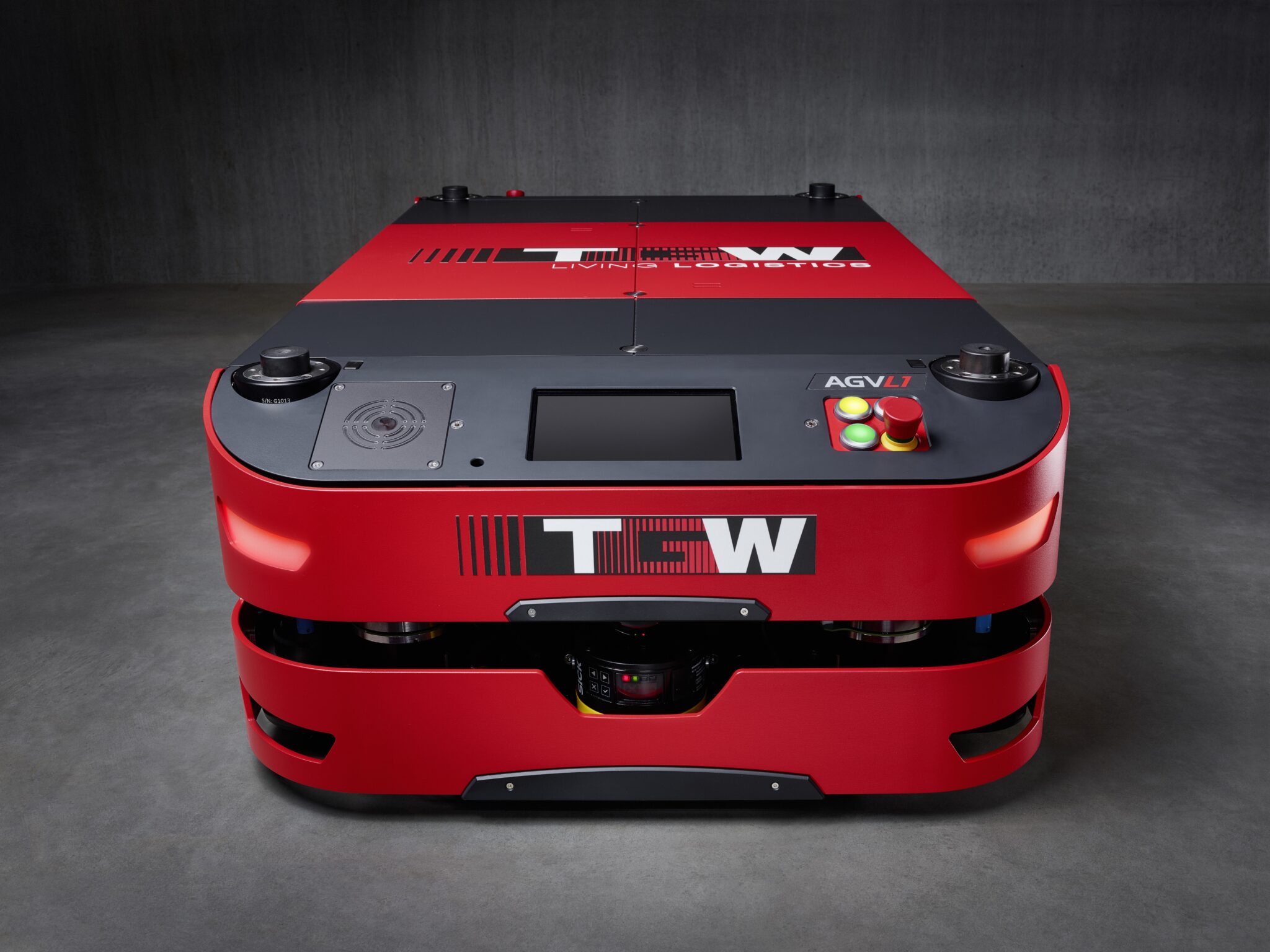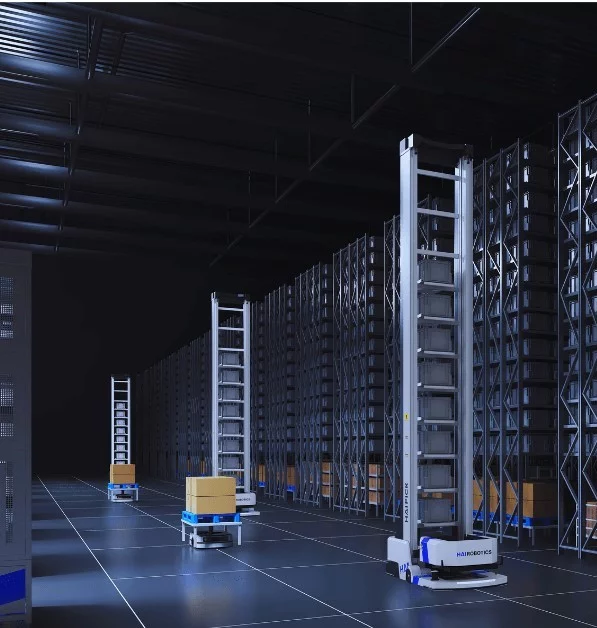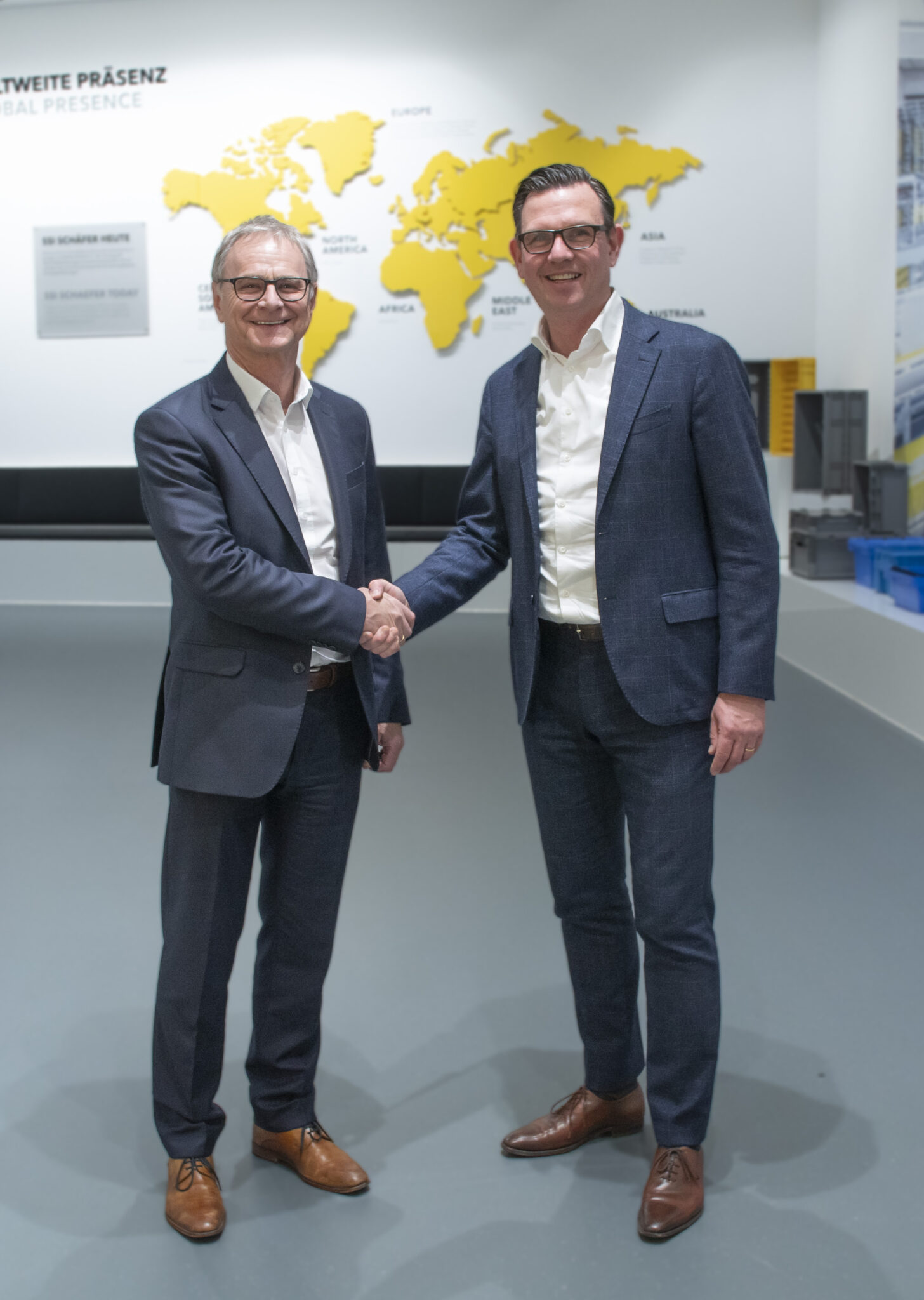About a year after signing a strategic partnership agreement with the German mobile robotics specialist SAFELOG, the interim results for TGW Logistics are positive. Customers are increasingly mindful of integration competence, security technology and process stability, which is why more and more businesses are putting their trust in solutions provided by these two companies.
Top quality at an attractive price: for workwear specialist Engelbert Strauss, this fundamental principle applies not only to their production of professional clothing, but also to their intralogistics. The German company was one of the first customers to invest in a new solution from TGW Logistics for its dispatch centre system in Biebergemünd: over two dozen mobile robots from the Quba series will independently transport totes to the workstations in the returns area.
Key technology for future-proof intralogistics
From Engelbert Strauss to the Swiss coffee machine manufacturer Thermoplan: numerous companies are putting their trust in the competence of TGW Logistics in the area of mobile robotics. Because the systems integrator defined the solutions as “a key technology for high-performance, flexible and future-proof intralogistics” according to CTO Christoph Wolkerstorfer, the company entered into a strategic partnership with SAFELOG in November 2022. The Quba family mobile robotics portfolio is made up of both AMRs (Autonomous Mobile Robots) and AGVs (Automated Guided Vehicles). The difference between the two categories has become increasingly blurry, for which reason TGW Logistics consolidates the portfolio under the term “mobile robotics.”
The flexible and versatile robots can transport totes, cartons and pallets, and handle a variety of tasks, including supplying production, packing or returns workstations as well as automatic palletising and de-palletising stations.
Flexible and scalable automation
Over a short span of time, TGW Logistics sold roughly 200 mobile robots from the Quba family as part of various projects; Stefan Riegler, Head of Business Development Mobile Robotics at TGW Logistics says there are multiple reasons behind this. For one thing, Riegler feels that more and more businesses are recognising the potential of mobile robots to provide a flexible and scalable automation answer to such challenges as labour shortages or scarcely predictable consumer behaviour, not to mention that they suit the tendency toward lower initial investments.
For another thing, TGW Logistics’ more than five decades of intralogistics experience makes the company a reliable partner when it comes to integration competence and security. “A crucial point in projects is often the evaluation of the processes to be automated. We see it as our main task to push technology back into the background, rethink existing processes and performance, and bring system availability and process stability to the foreground,” says Riegler. SAFELOG Managing Director Mathias Behounek agrees: “Customers need experienced, competent experts for large and complex integration projects. That’s the case at TGW Logistics and SAFELOG.”
Autonomous mobile robots
Reliability also plays a central role, according to Riegler. The TGW Future Private Foundation owns TGW Logistics, standing behind it and providing stability: the intralogistics specialist may not be sold, and two thirds of its profits remain in the company to be reinvested. Meanwhile, owner and managing director Michael Wolter stands behind SAFELOG and places great value in organic growth. Venture capitalists are not involved in the company. “Many customers shy away from doing business with a start-up that may be hoping to be bought up as soon as possible by the highest bidder,” says Riegler.
Another important factor, alongside a competitive market price, is trust. Before experts from TGW Logistics start talking about the technology, they analyse the process together with the customer. The question of “AGV or AMR?” is resolved by conducting a process analysis. This is not a question of faith, insists Riegler. He operates on the assumption that, in addition to the success factors already mentioned, IT competence will be what separates the wheat from the chaff in the future. This is not limited to expert knowledge of the mobile robots themselves, but also includes data analysis and simulations of complete systems.
Connection to existing systems is also possible
To the eyes of Alexander Leitner, Senior Vice President of Innovation & Technology at TGW Logistics, mobile robotics is not a cure-all and will not be in the future either, but it is nevertheless an important component of high-performance door-to-door solutions: “A great advantage of smart robotics systems is not only their flexibility and easy scalability, but also that they can be integrated into existing fulfilment centres after the fact.” From TGW Logistics’ and SAFELOG’s point of view and in terms of technology, the world of mobile robotics revolves around certain trend topics:
• Artificial Intelligence (AI): The use of AI will make mobile robots even more efficient and autonomous in the future. The versatile robots make decisions independently, and those decisions go beyond merely avoiding obstacles. Thanks to machine vision, they will recognise objects faster and assess situations better, all without time-consuming programming work. AI can also be used as a basis for smart charging, since it regards the fleet as a whole rather than considering each component separately. This means that the overall system is only called upon to perform the specific activities required at any given time.
• Interoperability: This is a central topic in the mobile robotics market. The ability of mobile robots from different manufacturers to communicate with one another, e.g. via the VDA 5050 interface, is an important factor for the success of a system.
• Cyber security: This range of topics plays an important role, particularly considering recent attacks on the IT infrastructures of large logistics companies. Mobile robots are finding ever more frequent use in critical infrastructures, and it is therefore important to make sure that they are as well protected against cyber attacks as possible.
Read similar news:
TGW presents new range of robotics
